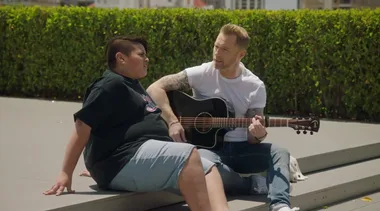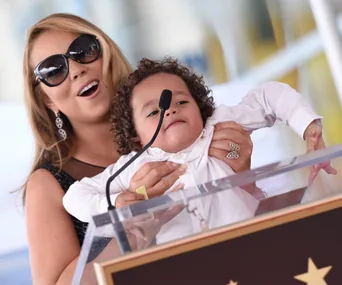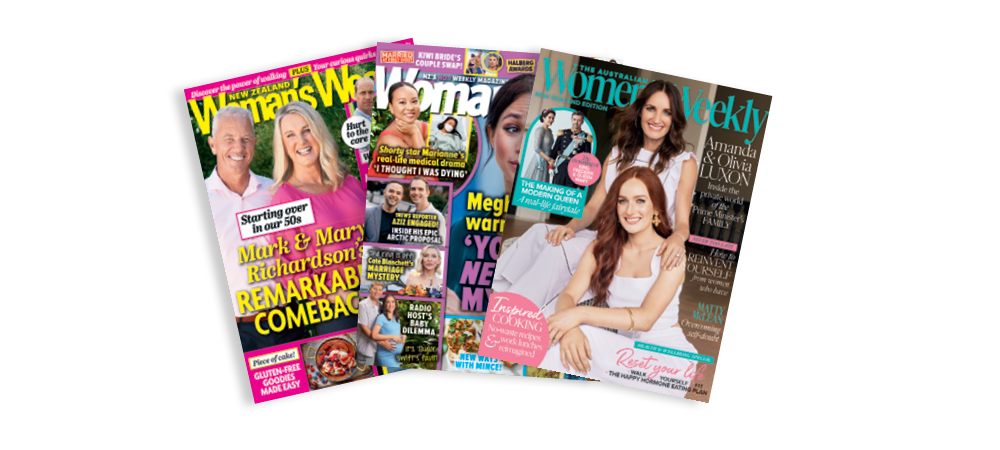Sticky Beak the Kiwi was THE Christmas song of the early 1960s, on high rotation in radio stations across New Zealand.
The singer was Julie Nelson, a 14-year-old schoolgirl from Gisborne plucked from obscurity − as old newspaper clippings note − by a couple with an eye for talent.
“The girl intends to go places,” said one, circa 1962.
“There is a quiet determination about Julie Nelson; she knows where she’s going and how to get there. Gisborne, it is considered, will be proud of her in the not too distant future.”
Marion Banks laughs at that.
Nothing, she reckons, could have been further from the truth. And she should know – Marion is, or was, Julie.
Listen to Sticky Beak The Kiwi, here:
Now 73 and living in Greytown, opposite the primary school she attended, Marion shakes her head.
She had no burning ambition to make it big as a recording artist, she says.
It was the 1960s after all − boys, back-combing, beehives, milk bars and mini-skirts were far greater priorities for a teenage Marion.

The youngest of three, Marion was born in Gisborne and moved to Greytown with her family when she was seven, later moving back to the east coast for high school.
For several years, from 1961 to 1963 she was feted as one to watch – our version of Helen Shapiro – performing at functions such as 21sts and engagements and recording a number of singles, including the iconic Sticky Beak, written by folk singer Bob Edwards and set to music by Neil Roberts.
From the moment she could, Marion sang at concerts and other functions, alongside her older sisters Jean (now 78) and Joy (77) − at one stage singing for Aunt Daisy’s radio show.
She can’t remember if it was at a 21st or an engagement party that her talent was spotted by local couple Mike and Anna Burton, who were credited with “discovering” her.
“I know it was at Kaiti Hall. They called me out into the hallway – Mum and Dad came too – and asked if they could manage me.”
They immediately told her a name change was needed.
“For some reason they didn’t like Marion, so I became Julie. I don’t know why they chose it, but in those days you didn’t say no to an adult, you just did what you were told,” she tells.
Over the next couple of years the teen continued to perform publicly − an article from the Gisborne Photo News shows her singing on the back of a truck to hundreds of revellers at a January holiday event – and privately at venues around Gisborne.
She also recorded a number of songs at studios in Palmerston North and Wellington with some, including Marion’s all-time favourite Too Many Tears, written especially for her by Neil Roberts.
Backing bands included the Satins and the Don Bell Orchestra (Sticky Beak) and Wellington’s Tony and the Initials, described as one-time “hit-paraders”.
But by the end of 1963 it was pretty much all over.
Marion stopped singing, partly, she explains, because she was at the age where self-confidence becomes self-criticism, but also because, well, boys!
“I couldn’t have cared less about singing. I wasn’t interested in anything but boys by then. All my friends would be going out on Friday and Saturday nights and I would be stuck at some-one’s 21st, with my mother, having to sing. On Friday nights I wanted to be up the main street with my friends. I sort of felt resentful in a way − it was hampering my social life!”
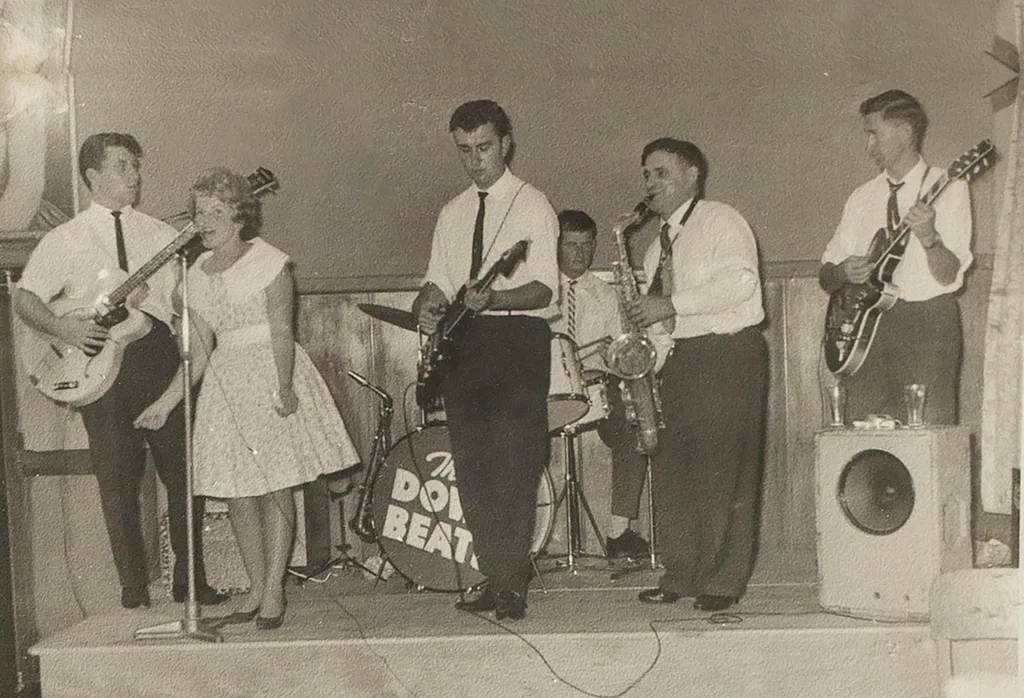
Marion, then Julie, performed regularly with a number of local Gisborne bands at private and public events.
She left school “the moment I turned 15” and by 17 the young singer was pregnant and living in Sydney with her first husband-to-be, Lloyd, a rodeo rider she’d met in a coffee bar in Gisborne.
Her only child, a son, also Lloyd, was born not long after her 18th birthday.
“I told nobody I was pregnant, although my mum-in-law, who had 11 children, pretty much knew straight away. It was in the days when you were pressured to give your baby up but there was no way I was going to let him go.”
Tragically, Lloyd Snr died in a car accident in 1968. In the intervening years Marion went back and forth between Australia and New Zealand, eventually settling in Howick, where she worked for 20 years managing a dental practice.
“It wasn’t easy. I was pretty much a solo mum for a long time – there were no benefits back then,” she says.
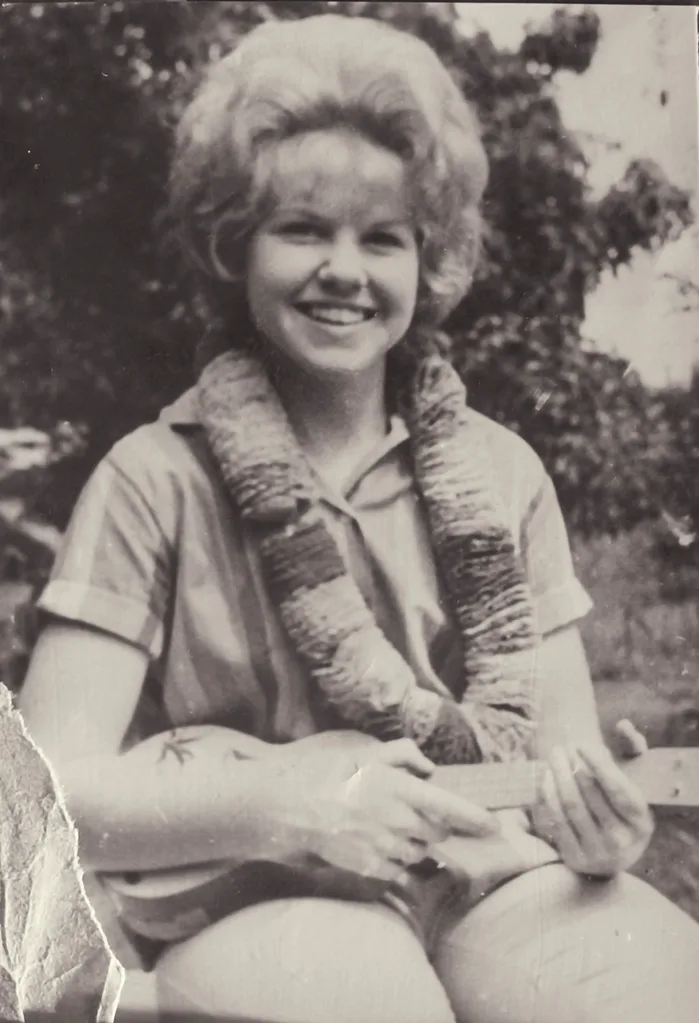
She was only in her early teens, but Marion recorded a number of songs in the early 1960s such as Ukulele Lady (above).
Marion never returned to performing after having her son, although there was a phase of karaoke singing at an Auckland bar.
“There was a group of us who would spend just about every weekend at the pub singing. I’d get up no trouble after three wines,” she tells.
And despite most of New Zealand knowing who Julie Nelson was, Marion says she never felt famous and while she remembers receiving a small cheque, that was it.
“There were never any royalties as far as I know.”
Still, when Christmas rolls around each year and the iconic song is played on the radio Marion usually gets a call from a friend saying they’ve heard her on the radio, and she’s still occasionally recognised too!
“I’ve been in Greytown for two years now, but when I first arrived I went to the Workingmen’s Club and a guy came up and said, ‘Hello sticky beak’, and I nearly fell off my chair. I said, ‘How did you know?’ And he remembered me from when I was little and sang there.”

